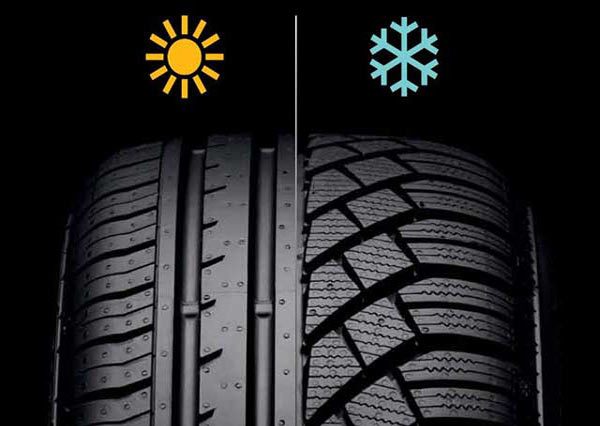
Choosing summer tires: why and by what parameters
Content
Summer car tires should be installed according to the season. When and why this needs to be done - every car owner should know. If there is a question of choosing rubber for the warm season, you need to take into account a number of parameters that affect safety, vehicle handling and the service life of the chassis elements.
Why change winter tires to summer
Summer car tires differ from winter tires in a number of ways: tread pattern, material composition and smoothness of the working surface. Winter slopes are characterized by the following properties:
- base softness;
- maintaining elasticity at low temperatures;
- porosity and roughness of the tread;
- increased tread depth from 8 to 10 mm.
Summer tires, on the contrary, have greater rigidity and increased wear resistance. The tread is characterized by larger sipes, and the working surface is smooth. Rubber is able to withstand high temperatures in the summer for a long time with slow wear. The tread height of these tires is up to 8 mm. Changing winter tires to summer tires and vice versa is necessary for a number of reasons:
- At a temperature of +7 °C, the properties of both types of tires deteriorate.
- When the ambient temperature drops to +5 °C, the rigidity of the summer skates increases, which negatively affects the adhesion to the road surface, resulting in an increased risk of skidding.
- When the temperature rises to +10 °C, the properties of winter tires deteriorate noticeably. The tire material becomes soft and the car loses its stability. In addition, the noise level increases, and the tread wears out noticeably faster.

How to choose summer tires for a car
With the advent of heat, the issue of choosing summer tires is of interest to many car owners. In order for the acquisition of slopes to be correct, it is necessary to take into account a number of characteristics and operating conditions of the vehicle.
Standard size
Before buying summer tires, you need to find out what size is suitable for your car according to the recommendations of the automaker. Usually this data can be found on the website or in service centers for your car brand. The standard size consists of several parameters:
- height;
- width;
- diameter.
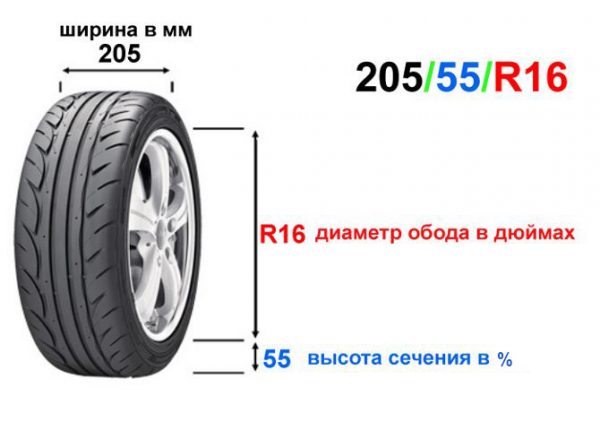
When choosing rubber by size, you need to understand that the tire profile is a relative value. Therefore, it will not be possible to select tires with a larger width and maintaining the height of the profile, since it always increases in direct proportion to the width. In addition, you need to carefully consider the landing size: the wrong parameter will not allow you to put the tire on the disk.

According to the height of the profile, rubber is divided into three types:
- low profile (≤ 55%);
- high profile (60–75%);
- full profile (≥ 82%).
A machine with low profile slopes has good handling, but at the same time it is very susceptible to road irregularities.
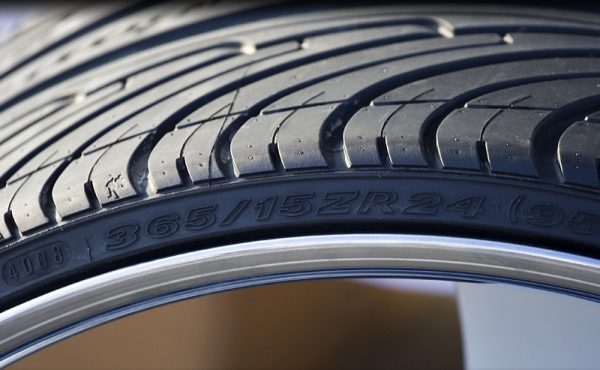
The high profile makes handling more difficult, but the car runs smoother on road imperfections. If there are no profile designations on the tire, then you have rubber with an indicator of 80–82%. Such tires, by analogy with high-profile tires, provide soft movement and good handling at high speeds.

Tread pattern
The nature of the tread grooves has a direct effect on wheel grip and rolling resistance. The tread pattern of summer tires can be one of the following:
- classic symmetrical or non-directional. This is the most common option, which is used on most cars in urban areas and on the highway, and is also installed from the factory;
- directed symmetrical. This type will be optimal for driving during rainy and foggy periods, as it is characterized by good water drainage and stabilization on wet roads;
- asymmetric. With this pattern, comfort is ensured in any weather, and rubber can be used for cars with different body types (sedans, SUVs). Due to the fact that on such slopes the tread pattern on the outside and inside is different, they need to be mounted only in the indicated direction.

Video: how to choose summer tires
Coated grip
Summer tires should have good grip, whether the road is wet or dry. Dry grip is important because many summer tires simply float on hot pavement. To safely drive a car, acceleration and deceleration must be confident. In this case, the important components are the pattern, profile, width and composition of the tire. For good grip on wet roads, tread width, tread height and tread pattern are important parameters.
The weight
An important parameter is the weight of the tire. The lighter the wheel, the less load is applied to the suspension, handling is improved and fuel consumption is reduced. The weight is determined by the width of the profile and the materials used in the manufacture of rubber. Today, world brands in the production of skates use artificial rubber, which is characterized by lightness and wear resistance.
Comfort and noise
Such a parameter as noise for some motorists is quite important. It depends directly on the tread and pattern: the greater the tread height, the noisier the tires. Since modern rubber has a rather complex structure, it is not always possible to understand in appearance how noisy it will be or not. Therefore, when choosing, it is best to consult with experts. If we consider tires in terms of comfort, then they are divided into hard, medium and soft. The first are suitable for use on flat roads. The soft type will be a great option for bad roads, because all the bumps are smoothed out, but at high speeds, these tires do not perform very well. The best option is to use rubber of medium hardness. It will provide good comfort both on roads with good and poor coverage.
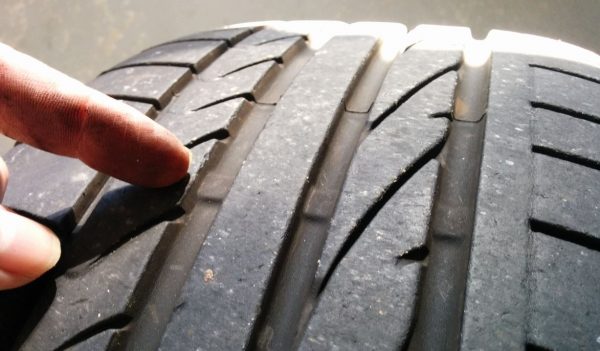

Speed index
The speed index parameter indicates the maximum speed with which you can move on such tires. High-speed tires are endowed with a large index, better grip and minimal braking distance, but their cost is much higher. If you prefer a calm driving style, then there is no need to install slopes with a high speed index.
Table: Letter designation of the tire speed index
| Index | M | N | P | Q | R | S | T | U | H | V | W | Y |
| Maximum speed km / h | 130 | 140 | 150 | 160 | 170 | 180 | 190 | 200 | 210 | 240 | 270 | 300 |
Load index
This parameter indicates how much load the rubber can withstand at maximum speed. If the car is often used for passenger and freight transport, then tires should be selected with a high load index. The most suitable products for the parameter in question can be selected according to the technical characteristics of your car.
Table: numerical designation of the tire load index
| Index | 70 | 75 | 80 | 85 | 90 | 95 | 100 | 105 | 110 | 115 | 120 |
| Maximum load, kg | 335 | 387 | 450 | 515 | 600 | 690 | 800 | 925 | 1060 | 1215 | 1400 |
frame
Structurally, tires are classified into diagonal and radial. Diagonal rubber has a carcass with several layers of cord. Their arrangement is made in such a way that the threads of adjacent layers intersect in the middle of the tread. The thread material is nylon or capron. In most cases, diagonal slopes are chambered and equipped with two side rings. The main advantages of such tires are relatively low cost and better protection from the sides. Among the shortcomings are:
- relatively fast wear;
- high rolling resistance;
- heavy weight;
- withstand less load than radial ones.
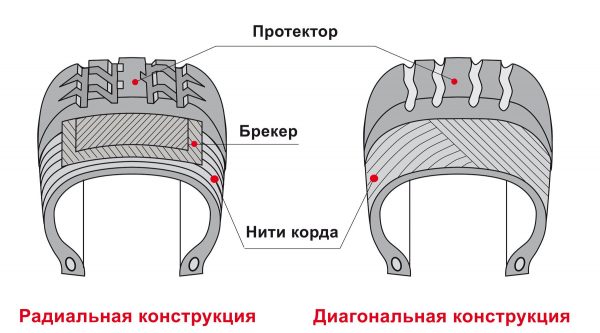

The fact that the tire is radial is indicated by the letter R in the marking. This type is used in almost all cars. In a radial tire, the cord has one layer with threads that do not intersect each other, and there is also one bead ring. Basically, such slopes are tubeless. They are endowed with such advantages:
- long service life;
- high wear resistance;
- lower rolling resistance, which saves fuel;
- good grip and handling;
- resistance to high loads.


New or used
Sometimes motorists have the idea of buying used tires. The main advantage of used tires is the lower cost compared to new ones. In addition, if there is knowledge that allows you to confidently choose high-quality rubber from a trusted supplier, then you can consider this option. However, when choosing used tires, it should be taken into account that the average level of tire wear is about 50%, and their price is only 40% lower than for new ones. If we consider new slopes, then they are perfectly balanced, have not been previously subjected to stress, so they are ready to serve more than one season. Properly selected new tires provide both comfort and safety, which not every used tire can boast of.
Video: how to choose used summer tires


Watch this video on YouTube
Recommendations of specialists
When choosing summer tires, first of all, you need to take into account the climatic features of the region where the car is used. If the machine will move in a region with frequent precipitation, then the tires should be quickly freed from water, which is required for the best traction. An important point is the nature of the road surface. Therefore, road tires on a gravel road will simply be inappropriate and, accordingly, vice versa. For off-road enthusiasts, the selection of wheels should be approached more carefully, since universal tires are not suitable for such conditions. In this case, you will need tires with an off-road tread pattern that will cling well to the ground and be cleaned of dirt.
In the process of choosing summer tires, do not neglect the factory sizes. If you install rubber with other parameters, this may lead to failure of the elements of the chassis of the car due to an increase in the load. As for manufacturers, today the tire market is quite diverse. You can choose from the following list of inexpensive tires:
- Dunlop;
- Premiorri;
- Achilles;
- Belshina;
- Cormorant;
- Hifly;
- Bullfighter;
- Triangle;
- kumho
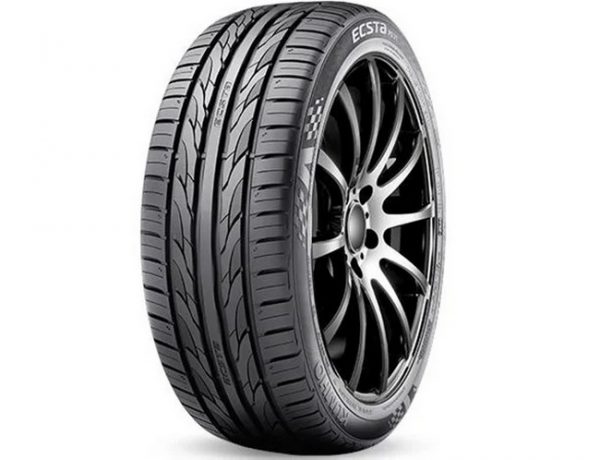

If the financial side of the issue is not decisive, then attention can be paid to the following list of summer tires:
- Pirelli Cinturato P7;
- Nokian Hakka Blue;
- Goodyear Efficient Grip Performance;
- MICHELIN Primacy 3;
- Nokian Hakka Green 2;
- Bridgestone Turanza T001;
- MICHELIN Energy XM2;
- Yokohama BluEarth-A AE-50;
- Nokian Nordman SZ;
- Continental Conti Premium Contact 5.
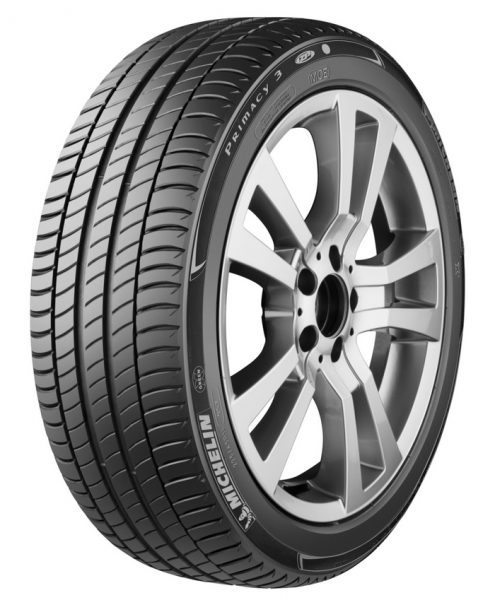

Reviews of motorists
I took Nokian Hakka Green 205/60 R16 96H for 2 thousand rubles. for a tire, made in Russia. For the price it was hard to find anything else. The tires did not disappoint, but pleased with the smooth passage of bumps, rails, etc. Before that, there were ContiEcoContact2. Rubber for a quiet ride - does not like sharp turns. It shows its best qualities at a temperature of 20-25 degrees - it is already starting to swim above.
A couple of weeks ago I put 30 Michelin Energy on the Hyundai i195.65.15, after which I got a lot of positive impressions. Firstly, the car now does not lead anywhere, it swallows small holes, it has become more confident on the rails. And an important point - it is very quiet on the pavement, the rumble that was on the old rubber is gone. I recommend.
I have a Henkuk, size 185/60 R14, pretty strong wheels. For 40 thousand mileage, tread wear is minimal. On my car, I have a heavy, 1,9 turbodiesel, they withstand the load perfectly. Before that, Amtel stood, after 15 thousand both became egg-shaped on the front end. Although the load index for Amtel and Henkuk is the same - 82.
Buying tires, at first glance, seems like a simple event. But since this car part is characterized by a large number of parameters, each of them must be taken into account when choosing, regardless of whether budget or expensive tires are purchased.

